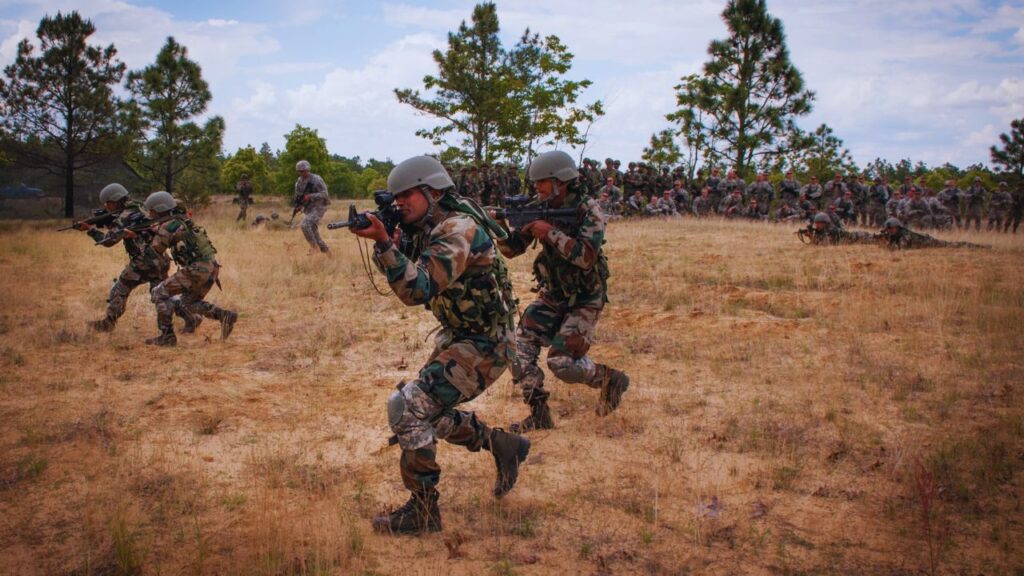Terrorism remains one of the most complex and persistent security challenges in the 21st century. Its evolving nature- spanning conventional attacks, cyber terrorism, radicalization through social media, and transnational networks- demands adaptive strategies and coordinated international responses. For India, with its diverse socio-political landscape and strategic location in South Asia, counterterrorism is a central pillar of national security policy. Understanding emerging trends, operational challenges, and strategic frameworks is essential for safeguarding national interests and maintaining regional stability.
Global Trends in Terrorism
Over the past decade, terrorism has evolved from traditional insurgencies and organized attacks to highly decentralized, technology-driven operations. Key trends include:
- Decentralized Networks: Modern terrorist organizations increasingly operate as loosely connected cells rather than hierarchical structures, making detection and disruption more challenging.
- Cyber Terrorism and Propaganda: Social media platforms and encrypted communication channels facilitate radicalization, recruitment, and the planning of attacks.
- Transnational Threats: Terrorist groups often operate across borders, exploiting geopolitical instability, weak governance, and porous borders.
- Hybrid Threats: Terrorism now intersects with other forms of asymmetric warfare, including cyber attacks, sabotage, and hybrid insurgency strategies.
Global hotspots continue to emerge, including the Middle East, parts of Africa, and South Asia. Organizations such as ISIS, Al-Qaeda, and regional militant groups exploit conflict zones and political vacuums to expand influence, challenging traditional counterterrorism methods.
India’s Counterterrorism Context
India faces a complex counterterrorism environment due to its geography, diversity, and strategic importance. Threats range from cross-border terrorism originating in neighboring countries to domestic radicalization fueled by ideological extremism. Key concerns include:
- Kashmir Insurgency and Cross-Border Infiltration: Militancy in Jammu & Kashmir remains a primary security concern, with periodic infiltration attempts and attacks targeting civilians and security forces.
- Left-Wing Extremism (LWE): Although declining in intensity, Maoist insurgencies continue to affect internal security and development projects in central and eastern India.
- Urban Terrorism: Large metropolitan areas remain vulnerable to attacks, as seen in incidents in Mumbai (2008) and other urban centers.
Strategic Approaches and Operational Measures
India’s counterterrorism strategy is multi-dimensional, combining military, intelligence, legal, and socio-economic measures:
- Intelligence and Surveillance: Organizations such as the Research and Analysis Wing (RAW), Intelligence Bureau (IB), and National Technical Research Organisation (NTRO) coordinate intelligence gathering, surveillance, and counter-intelligence operations.
- Special Forces and Rapid Response Units: Elite units like the National Security Guard (NSG), Para SF, and other paramilitary forces conduct precision operations to neutralize high-value targets.
- Cyber and Technological Tools: AI, data analytics, and digital forensics are increasingly used to monitor online radicalization, track communication networks, and disrupt terrorist financing.
- Border Security Measures: Enhanced surveillance, fencing, and cross-border intelligence-sharing aim to prevent infiltration and smuggling of weapons and explosives.
- Legal Frameworks and Policy Measures: The Unlawful Activities (Prevention) Act (UAPA), National Investigation Agency (NIA) operations, and amendments to counterterrorism laws provide legal support for preventive and punitive action.
Challenges in Counterterrorism
Despite advancements, counterterrorism faces persistent challenges:
- Evolving Tactics: Terrorist groups rapidly adapt to new technologies and operational environments, complicating predictive intelligence.
- Ideological Radicalization: Addressing the root causes of radicalization, including socio-economic grievances and extremist narratives, remains a long-term challenge.
- Cross-Border Coordination: Diplomatic constraints and varying regional priorities can hinder effective intelligence-sharing and coordinated action.
- Humanitarian and Ethical Constraints: Counterterrorism operations must balance operational effectiveness with civilian protection and adherence to human rights norms.
Emerging Opportunities and Best Practices
To strengthen counterterrorism capabilities, India can leverage several opportunities:
- International Collaboration: Participation in global coalitions, intelligence-sharing platforms, and joint counterterrorism exercises enhances regional and international security.
- Technological Innovation: Expanding AI, predictive analytics, drone surveillance, and cybersecurity frameworks can improve operational efficiency and threat anticipation.
- Community Engagement: Grassroots initiatives, deradicalization programs, and education campaigns reduce the appeal of extremist ideologies.
- Policy and Legislative Reforms: Continual review of legal frameworks ensures they remain effective against evolving terrorist tactics without compromising democratic values.
Conclusion
Counterterrorism in the modern era demands a nuanced and multi-layered approach. India, situated in a complex security environment, has developed a robust framework combining intelligence, operational readiness, technological innovation, and legal mechanisms. However, evolving threats, ideological radicalization, and transnational networks necessitate continuous adaptation and proactive measures.
By integrating technology, diplomacy, and community engagement into its counterterrorism strategy, India can enhance national security, protect civilian populations, and contribute to regional stability. The battle against terrorism is no longer solely about kinetic action- it is a strategic, multifaceted endeavor that shapes the nation’s resilience and global standing in an increasingly uncertain world.

